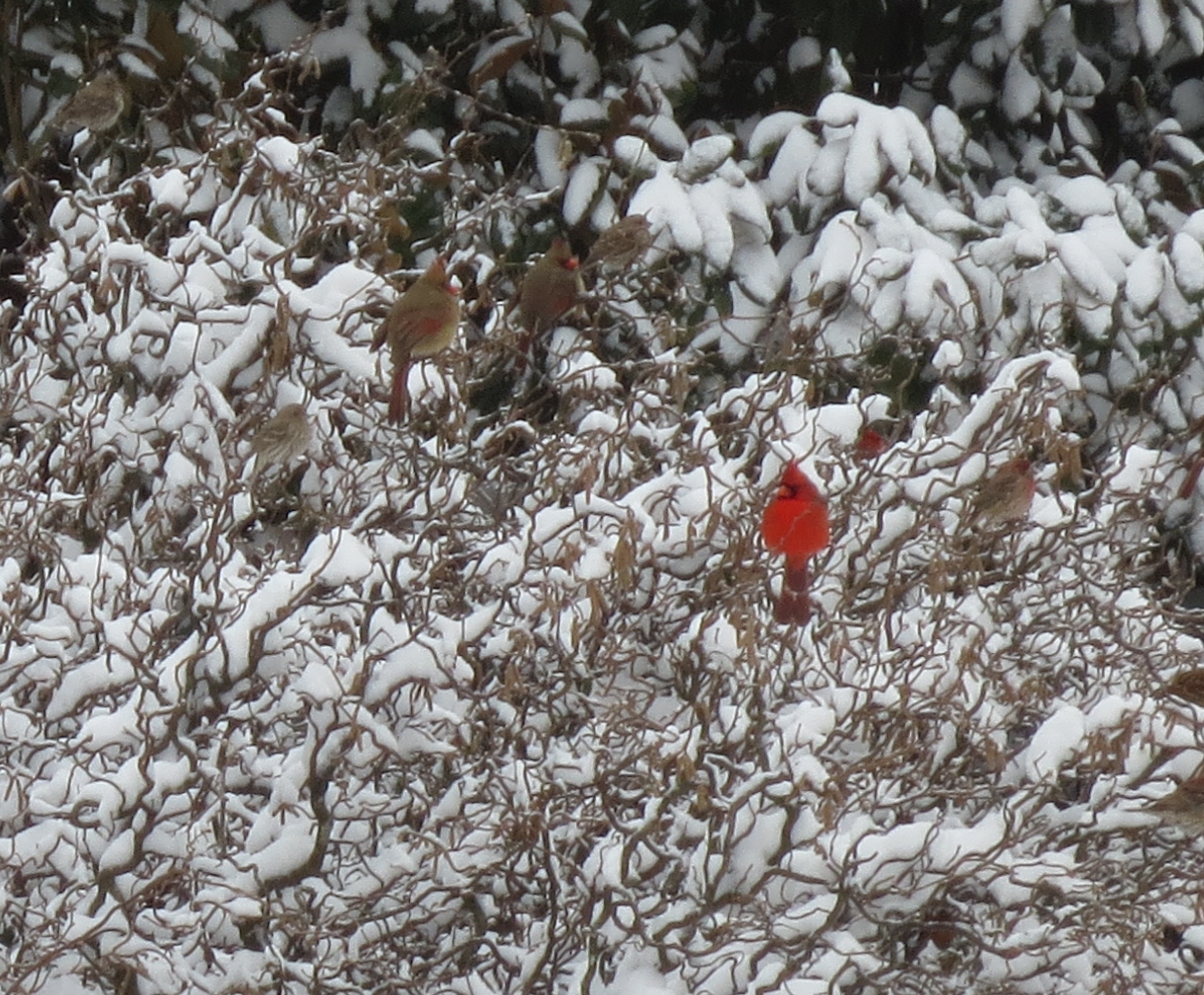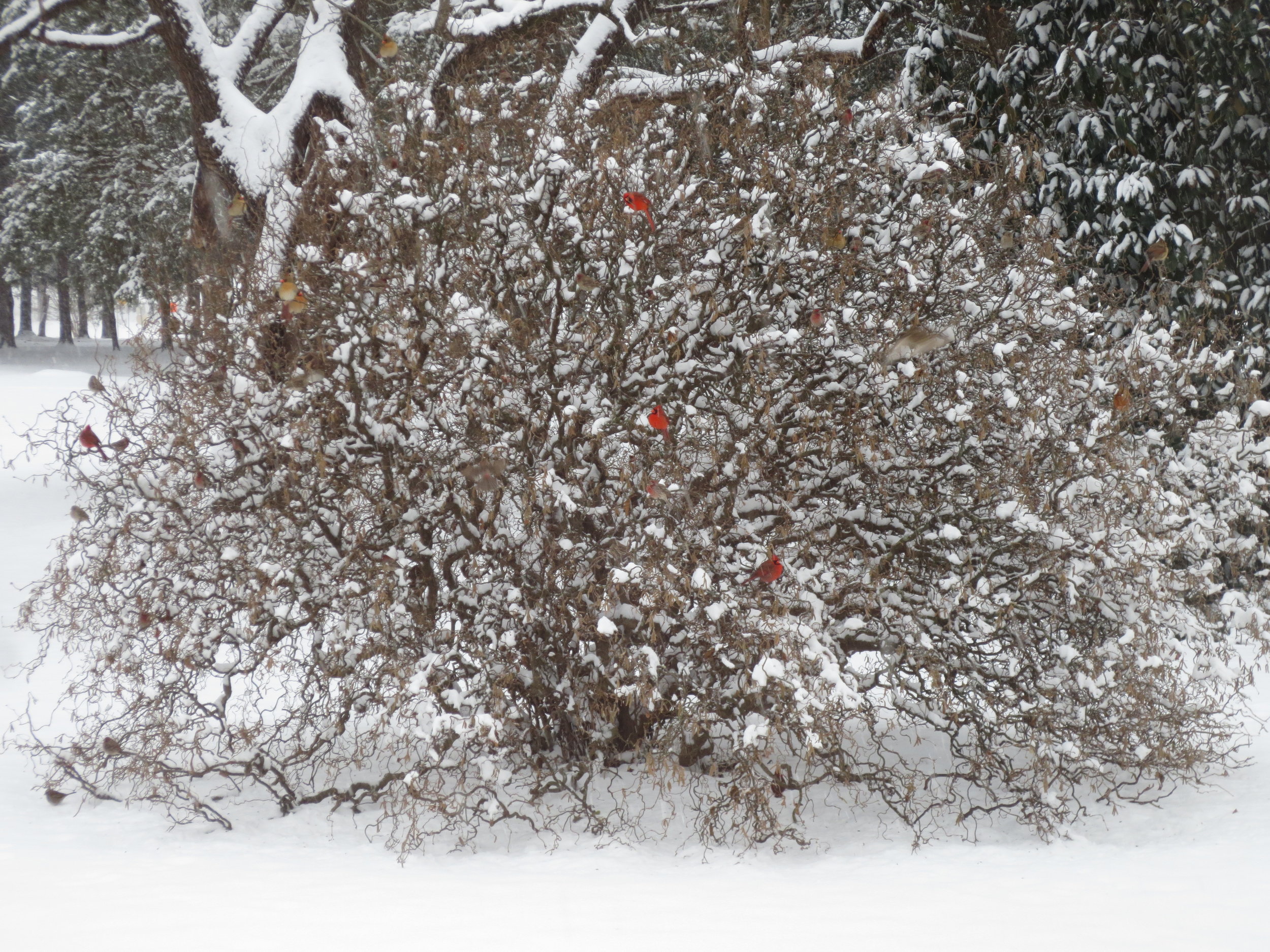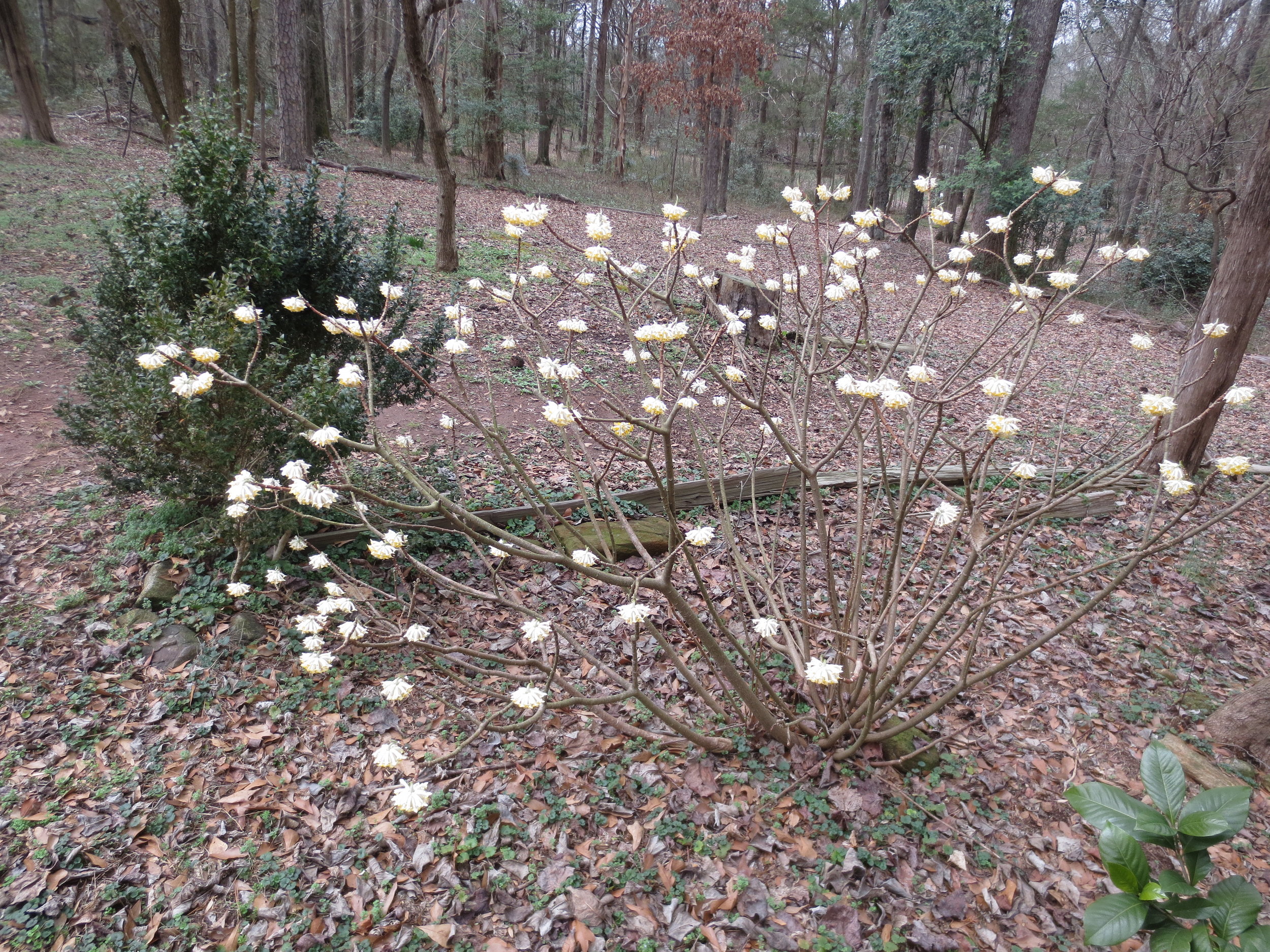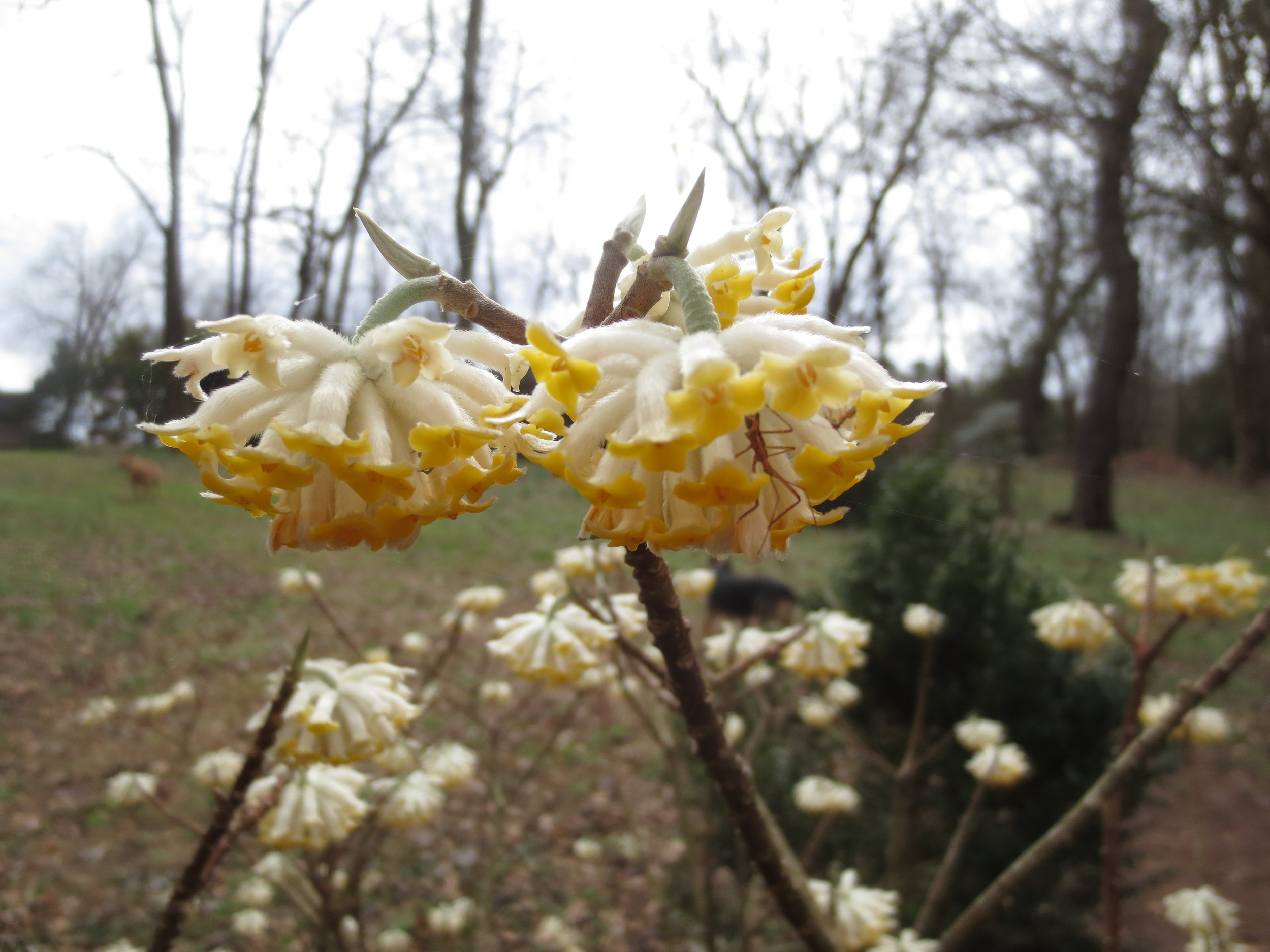It’s an inescapable fact: Gardeners feel the call of the weird. The longer one has been a gardener, the more peculiar our taste becomes. One of my favorite not-your-average-shrub specimens is Harry Lauder's Walking Stick (Corylus avellana 'Contorta'), also called a Contorted Filbert. The plant produces drooping catkins in the winter, but no nuts.
This deciduous shrub reaches eight feet in height and width. Mine is a good bit bigger, as a result of accidentally planting it in our septic system drainage field. It’s not exciting to look at in the summer, but the photo below should convince you that you must have one. The birds love it.
The more sun the shrub receives, the curlier the branches are. Some grafted plants are prone to throwing straight suckers from the root stock. This calls for frequent pruning to retain the plant’s intended appearance. Buy an “own root” plant if possible. Cut branches can easily be spray-painted to accent cut flower arrangements.
Another unusual choice is Edgeworthia chrysantha. Its claim to fame is the fragrant blossoms that appear in late winter, when few other shrubs are in bloom. They show well at the tips of leafless branches. Many of us who have tried and failed to keep Winter Daphne alive have changed our allegiance to this less-temperamental plant.
Stamens persist after the petals have fallen, looking like tufts of yellow thread stuck onto the end of each branch. Edgeworthia spreads by suckering but is not invasive. If you want more plants, you can carefully dig out one of the suckers (retain some roots) and move it to the desired new location. They also propagate fairly easily. Site in shade to partial shade (ideal in a woodland garden) and keep them moist for the best bloom display. They reach four to six feet tall, but final size varies with soil fertility and moisture.




